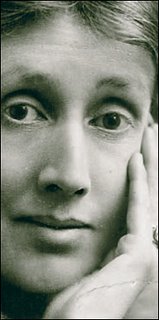In Europe at the moment File Sharing, Digital Management Rights, Software Patents, Open Source Software and "Piracy" are hot topics. Almost daily there is a report in Newspaper, on TV or radio concerning the subjects. Running in scope from the greatest threat to civilization since
Ghengis Khan to a utopian vision of a society where information and learning are ubiquitous. It is a complex mish mash of issues and interests and how one feels about it often is dependent on what one does for a living, how old one is and where one lives.
I myself seem to be one of Ghengis's crew (white male 30 something university technologue with a background in media and communications, languages and IT) and this is one point of the scenario which worries me (not my legal status, something deeper than that). But first another story:
Last night listening to the state radio news here in Sweden. A piece about a Council of the European Union meeting taking place in Brussels 12-15 December which will vote on the
RETENTION OF TELECOMMUNICATIONS TRAFFIC DATA. A lobby group acting on behalf of a large percentage of the major music industry manufacturers (Sony BMG, Disney, EMI, Warner, IFPI, MPA and Universal Music International and more) is campaigning for a widening of the scope of the
original legislation. Intended to allow security organizations to gather data on mobile phone surveillance, internet use and other electronic communication by forcing service providers to archive data from media transactions by clients. The Creative Media Business Alliance (CMBA) is a lobby group within the structure of
IFIP (International Federation of Phonographic Industries) and they have sent
a letter to all members of the European Parliament urging:
1. The scope of the proposal should include all criminal offences
2. Internet data must be retained for a sufficient period of time
3. The access and use of data for law enforcement purposes
must not be limitedA major issue with the CMBA is the Lisbon Agenda of 2000 for Europe to be "the most competitive and dynamic knowledge-driven economy by 2010" and how it has "failed". They use the
Kok Report from November 2004 as proof of this. I would argue they are reading the Kok Report somewhat selectively, particularly in relation to online information networks and Digital Rights Management. Two example I found after a very brief look at the Kok report:
"social cohesion and environmental sustainability can contribute to a higher level of growth and employment"
How is criminalising millions of Europeans for sharing what is essentially information going to encourage social cohesion? The environmental pressures from manufacture and transportation of CDs and other media products from the members of the CMBA are much less sustainable than the transferring of bits over the world wide web.
"ICT allows [for] more participation in democracy and public life"
But only if you pay for it according to the CMBA.
"The main issues for the realisation of the Lisbon agenda were:
the necessary investment in R&D, that is three per cent of GDP;
reduction of red tape to promote entrepreneurship;
achieving an employment rate of 70 per cent (60 per cent for women);"
from
EurActive.comThere are clearly a conflict of several interests in the development of an information society. An excellent summary of this is by Peter Johnston in his European Commission online presentation
The Knowledge Economy, Sustainable Development and Corporate Responsibility.
Returning to me riding with Ghengis Kahn. If the European Union is going to seriously criminalise (jail, surveillance, employment and travel problems due to convictions etc.) those who use file sharing networks then a large percentage of those who will be driving the knowledge economy over the next half century are criminals. The IFIP itself estimates that for the first six months of 2005 "Infringing music files available on file-sharing networks and websites rose slightly (3%) from 870 million in January to 900 million, while broadband lines installed grew four times faster at 13%." The discrepancy between broadband uptake and file sharing I would say is due to only certain sections of the online community sharing files, such as not in professional settings and they fail to measure it against legal sharing of non-copyrighted (open source) material.
A perhaps more coherent account than mine of the Digital Information Retention directive is available here at the
Open Rights Group site. From them I take my closing paragraphs:
"So, why is this important right now, this minute?
Both Data Retention and IPRED2 are being frogmarched through the European Parliament at an alarming speed. Votes are being held by three committees over the next few days on Data Retention, with secret meetings going on in the background between the Council, the Commission and the Parliament, with the aim of reaching a tacit agreement on what this legislation should look like.
On 13 December 2005, the Parliament votes on the Data Retention directive. Usually, they get two stabs at it, with the Council having a say in between. This time, they get just one vote.
This time, MEPs will have just a few days between being presented with the proposed legislation as drawn up in the secret meetings and being expected to come to an informed, considered decision on whether it should become law.
Word has it that there are some MEPs who do not even realise that this is a single reading process - they are expecting the normal two reading process instead. Most MEPs have probably not been following the debate around Data Retention in detail, and giving them just a few days to absorb, understand, and analyse the proposals will ensure that, by the time they must cast their vote, they will through no fault of their own still not be in a position to make a reasoned decision.
This is not democracy.
What can you do?
Email your MEP now. Tell him or her that you oppose Data Retention, and that you are concerned about the way it is being rushed through the European Parliament. Read
this pamphlet (sent to all MEPs by EDRI) for talking points to discuss.
Read up about IPRED2. With all the work going on with software patents and data retention, IPRED2 has not had the coverage it deserves. The FFII (the
Foundation for a Free Information Infrastructure) has been doing a fine job tracking it, but it needs more exposure.
Blog about your concerns and encourage your readers to contact their MEP and particularly the Green Party, who may yet play a vital role in protecting your civil liberties by tabling a rejection of the Data Retention proposal.
The recording industry and the UK presidency are determined to get their way through stealth, not debate. We can't let the European Parliament sleep-walk their way into these statutes."
Technorati Tags: Digital Rights Management File Sharing Surveillance







